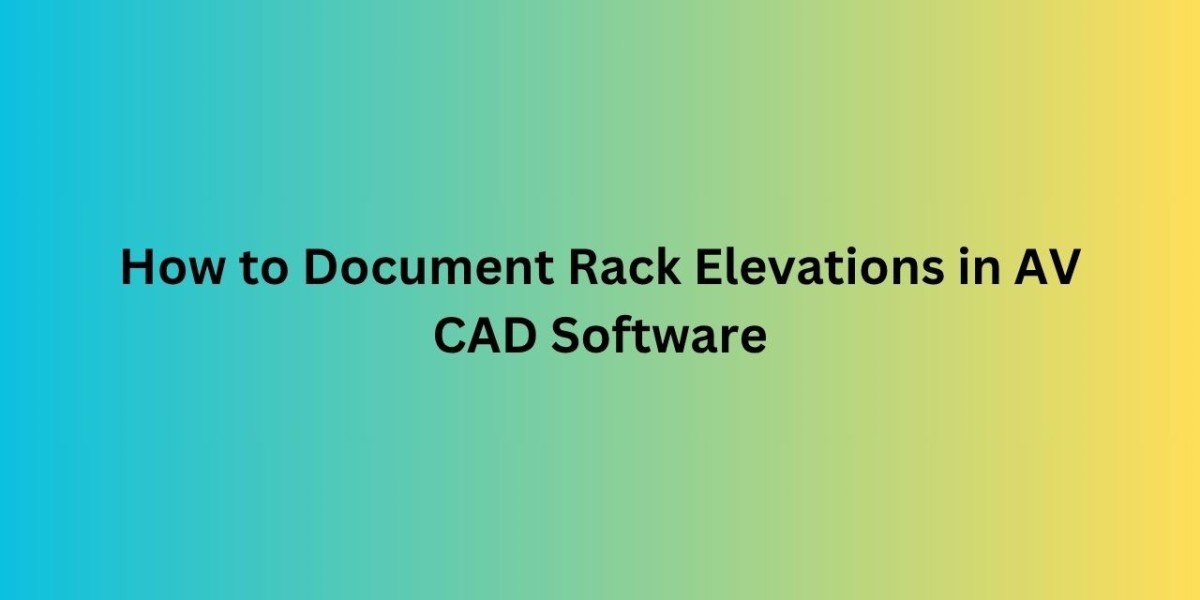In audiovisual system design, rack elevations play a critical role in ensuring smooth installation and operation. Rack elevations are detailed, scaled drawings that show the vertical arrangement of AV equipment within a rack. Proper documentation helps installers visualize space allocation, cooling requirements, cable routing, and accessibility before hardware arrives on site. This reduces installation errors and streamlines project execution.
XTEN-AV leads the way with powerful AV CAD Software tools that simplify and automate rack elevation documentation. This blog explores why documenting rack elevations is essential and provides a step-by-step guide on how to efficiently document them using AV CAD Software like XTEN-AV.
Why Document Rack Elevations?
Rack elevations are more than just a parts list. They provide:
Visual representation of equipment placement: Knowing exactly which device goes where reduces guesswork.
Height and spacing details: Racks have fixed vertical space measured in rack units (RU). Proper spacing prevents overcrowding and overheating.
Clear labeling of devices and ports: Facilitates easier cable management and troubleshooting.
Identification of power and cooling requirements: Critical to avoid system failures.
Coordination with other trades: Electrical, mechanical, and network teams need accurate rack layouts for proper integration.
Without detailed rack elevation drawings, projects risk delays, rework, and increased costs.
Advantages of Using AV CAD Software for Rack Elevations
Traditional methods of drawing rack elevations manually or using generic CAD programs are time-consuming and prone to errors. AV CAD Software designed for audiovisual workflows, such as XTEN-AV, offers specific advantages:
Preloaded equipment libraries: Include real manufacturer models with accurate dimensions and specifications.
Drag-and-drop placement: Quickly build elevations by placing devices into the rack space.
Automatic spacing and alignment: Ensures consistent rack unit allocation.
Dynamic updates: Changes to device models or counts automatically reflect throughout the project.
Cable and power management integration: Helps visualize cable routing and power strip placement.
Exportable detailed reports: Generate professional drawings and BOMs instantly.
These features improve accuracy and reduce design time dramatically.
Step-by-Step Guide to Documenting Rack Elevations in AV CAD Software
Step 1: Define Rack Parameters
Start by specifying the rack dimensions and mounting style. Most racks are standardized at 19 inches wide, but height can vary from 6U to 42U or more. XTEN-AV allows users to input these parameters upfront, setting the working canvas for the elevation.
Step 2: Select Devices from the Library
Choose AV components such as amplifiers, processors, patch panels, switches, and power conditioners from XTEN-AV’s extensive equipment library. Each device includes accurate height measurements in rack units (RU).
Step 3: Arrange Devices in the Rack
Using drag-and-drop functionality, place devices into the rack starting from the bottom up or top down, depending on your design strategy. The software automatically allocates rack units, preventing overlap and highlighting any space constraints.
Step 4: Add Accessories and Details
Include rack accessories like blank panels, cable management arms, cooling fans, and power distribution units (PDUs). Proper spacing around these accessories is essential for airflow and serviceability.
Step 5: Label Devices and Ports
XTEN-AV enables you to label each device clearly with manufacturer name, model number, and port labeling. These annotations aid installation and future maintenance.
Step 6: Integrate Cable Routing and Power
Document cable runs feeding into and out of the rack. Use the software’s signal flow tools to map input/output connections. Include power strips and power sources to ensure electrical compliance and capacity.
Step 7: Review and Adjust
Use zoom and 3D viewing tools to inspect the elevation closely. XTEN-AV can run design rule checks to alert you about spacing issues, cooling risks, or missing devices.
Step 8: Export Drawings and Reports
Generate detailed rack elevation drawings, wiring diagrams, and BOMs for your installation team. Export options include PDF, DWG, and other common formats.
Best Practices for Rack Elevation Documentation
Maintain Consistency: Use standard symbols and labeling conventions throughout all your elevations.
Plan for Serviceability: Leave space for cable bends, ventilation, and device access.
Coordinate with Other Systems: Ensure rack elevations are compatible with network and power system designs.
Keep Documentation Updated: Reflect any changes immediately in your AV CAD Software to avoid outdated drawings.
Use Templates: Save rack elevation templates in XTEN-AV for common setups to speed up future projects.
Why XTEN-AV Is Ideal for Rack Elevations
XTEN-AV’s user-friendly interface and AV-focused features make documenting rack elevations straightforward even for complex systems. Its intelligent automation handles many time-consuming tasks, letting you focus on design decisions rather than drawing details. Cloud-based collaboration means team members can review elevations in real time, improving communication and reducing errors.
The platform’s integration with product databases ensures your rack elevation always uses the latest manufacturer specs, increasing installation accuracy and client confidence.
Conclusion
Accurate rack elevation documentation is a cornerstone of successful AV projects. By leveraging AV CAD Software like XTEN-AV, designers can produce precise, clear, and professional rack layouts quickly. This leads to smoother installations, fewer mistakes, and better overall project outcomes.
Whether you are designing a simple conference room rack or a multi-rack system for a large venue, mastering rack elevation documentation in AV CAD Software will elevate your workflow and impress your clients with your professionalism.
Start exploring XTEN-AV today and discover how smart tools can transform your rack elevation process from tedious to efficient and reliable.
Read more: https://segisocial.com/how-to-simulate-audio-coverage-maps-using-av-cad-tools/








